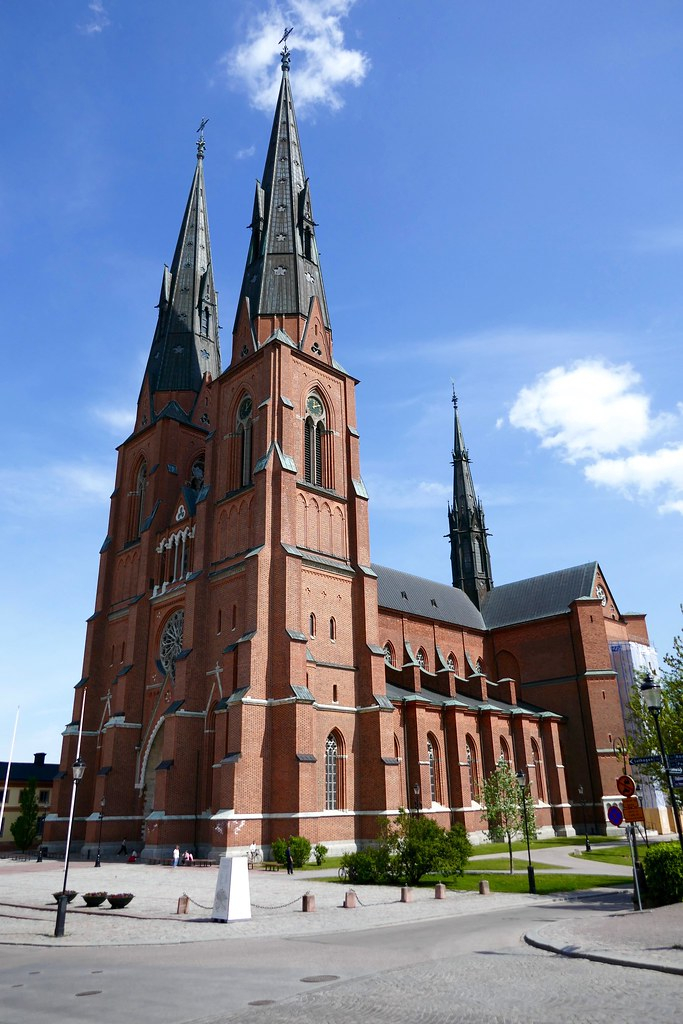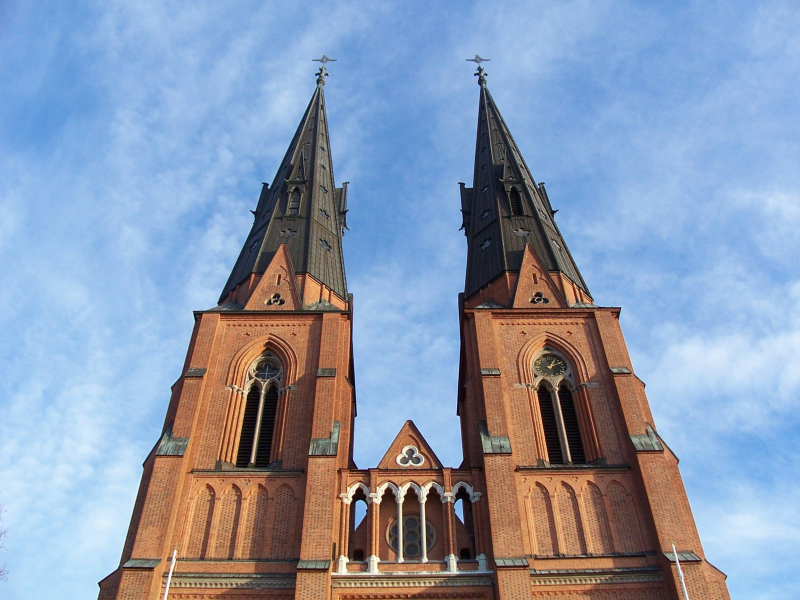Uppsala Cathedral

Uppsala Cathedral is a cathedral located in the center of Uppsala, Sweden, between the University Hall and the Fyris river. Uppsala Cathedral is the seat of the Archbishop of Uppsala, the primate of Sweden, and is a church of the Church of Sweden, the national church, in the Lutheran tradition. It is also the burial place of King Eric IX, who became the nation's patron saint, and the customary venue for the coronation of future Kings of Sweden.
French architects, notably Étienne de Bonneuil, created the church in the French Gothic style. It is shaped like a cross created by the nave and transept. The majority of the edifice was constructed between 1272 and 1420, although the western end was not completed until the middle of the 15th century. Soon after, twin towers were added on the west end of the church. High spires were added later, but following a fire in 1702, Carl Hrleman ornamented them with low helms in 1735. Helgo Zetterwall, who made significant improvements to the structure in the 1880s, entirely remodeled them. The cathedral's main building material is brick, although the pillars and numerous features are made of Gotland limestone.
The vaults were all built in accordance with the original 13th-century design, however some were added as late as 1440. In addition to the artwork in the burial chapels, the Treasury Museum houses some of the church's earlier furniture. Many features were lost in a big fire in 1702. Many of the medieval frescoes that had been painted over during the Reformation were unearthed and restored during the 1970s repair work. Uppsala Cathedral is a sanctuary to many believers who come to attend services and congregate in the house of the Lord. It is also a place where there is an exchange of culture, knowledge, and experience.
Location: Uppsala, Sweden











